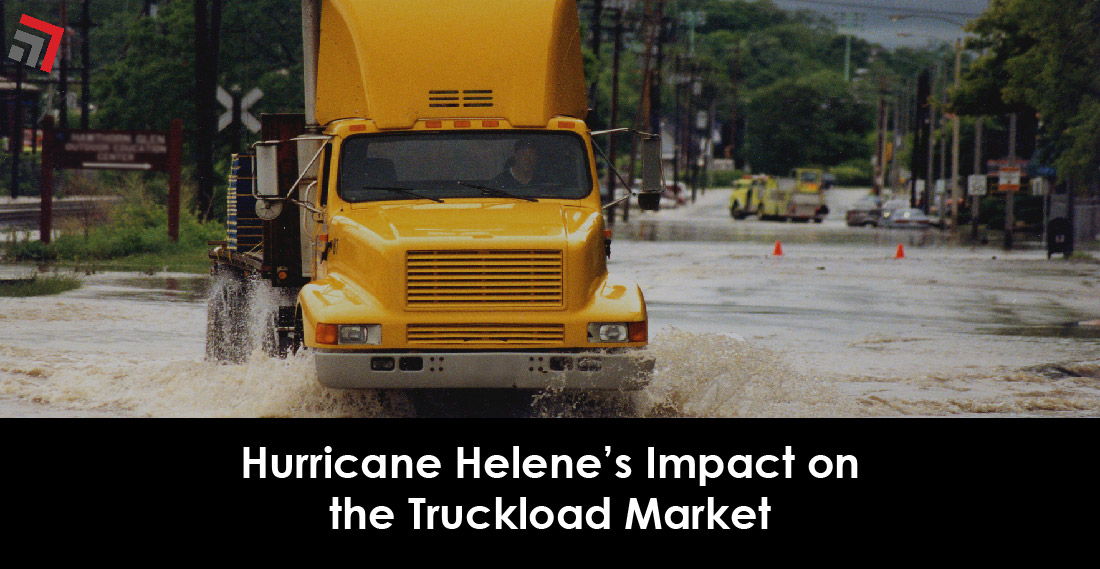Last week, Hurricane Helene pummeled the U.S. Southeast, leaving behind a path of destruction as far north as West Virginia. While hurricane-related damage is usually worst near the coast, Helene, a Category 4 storm, was especially potent farther inland as heavy rainfall spurred on historic flooding.
As of Thursday, no more than a week since the storm made landfall, a large swath of the inland southeast remains in recovery mode as homes, businesses, and roadways are still underwater.
Western North Carolina has endured the brunt of the storm’s aftermath. Widespread flooding has resulted in a large swath of road closures across the region. Residents across the area remain isolated without direct access to gas, power, and communications. Both interstates 40 and 26, popular trucking lanes, are impassible, rendering direct travel from North Carolina to Tennessee futile at the moment.
For the latest information: Download North Carolina DOT’s Road Closure Report (updated 10/03/24)
Neighboring states Georgia, South Carolina, Tennessee, Virginia, and West Virginia also have reported stretches of closed roadways and restricted travel due to flooding.
Freight movement stalled, disaster relief heads to U.S. Southeast
Freight movement in the U.S. Southeast has stymied as a result. On the rail end, Norfolk Southern has taken several days to restore certain sections of its network. However, the railroad has since resumed key services through Charlotte and Atlanta.
Related: No other event matches a hurricane’s impact on truckload market
On the trucking end, a post-disaster biosphere has formed around western North Carolina and parts of neighboring states as well. Until critical infrastructure is restored, the region’s truckload market will be anything but usual.
As far as commercial freight movement is concerned, there is little to no demand for loads to move outside of western North Carolina and adjacent border markets. Unfortunately, priorities forcibly changed last week as many businesses in the region closed up shop to deal with the more imminent, personal impacts of Helene. This plight is best illustrated in Asheville, a well-populated city in the Blue Ridge Mountains.
Instead of regularly scheduled arrivals and pickups at local businesses, a peculiar, strictly circumstantial, force will take over truckload demand over the next several weeks.
After a natural disaster, there is demand from governments and welfare organizations to deliver inbound loads to communities in need of relief. These shipments, which could range from meals to construction supplies, are typically awarded to carriers at extraordinarily high rates given the circumstances. In fact,loads contracted out by FEMA, a U.S. federal agency, may pay up to $5 per mile. Given the lucrative rates as well as the goodwill of the operation, most trucking companies are receptive to hauling loads of disaster relief if routes are accessible. Considering the widespread flooding caused by Helene though, truckload transportation of emergency loads is likely still challenged. In the days after the storm, helicopters have had to carry loads to communities isolated by road closures. However, as conditions improve in time, emergency truckloads will become more common.
Overall truckload market will feel Helene’s impacts
The unofficial slogan of logistics and transportation industries: everything’s connected. Even though Helene’s wrath zeroed in on Appalachia states, a dastardly ripple effect is set to reverberate throughout U.S. supply chains.
The need to transport emergency supplies to support affected states will absorb a fair deal of the southeast’s greater truckload capacity. Considering the scope of residual damage, this pocket of demand could last for weeks, even months.
According to DAT Freight & Analytics, spot (open) market data shows spikes in activity across key sectors. Dry-van loads rose 10 percent week-over-week across the southeast region, while refrigerated loads jumped 16 percent over the same period in the southeast. Flatbeds have seen the largest acceleration, spiking 81 percent from the previous week in the Tallahassee, FL area.
However, the hurricane’s impact extends beyond a strain to regional capacities. Shippers who have freight routed through the southeast can expect considerable delays. As previously mentioned, a large swath of the region’s roadways is closed, including nearly all of western North Carolina’s network.
Until roads reopen, long-haul freight that usually moves through the southeast will be rerouted. Shippers may shift to different carriers outside of the region altogether. These temporarily detours and/or carrier changes will tap into the overall capacity of the truckload market, a phenomenon which would pressure rates to rise.
How will a post-disaster truckload market impact your shipping situation?




Recent Comments